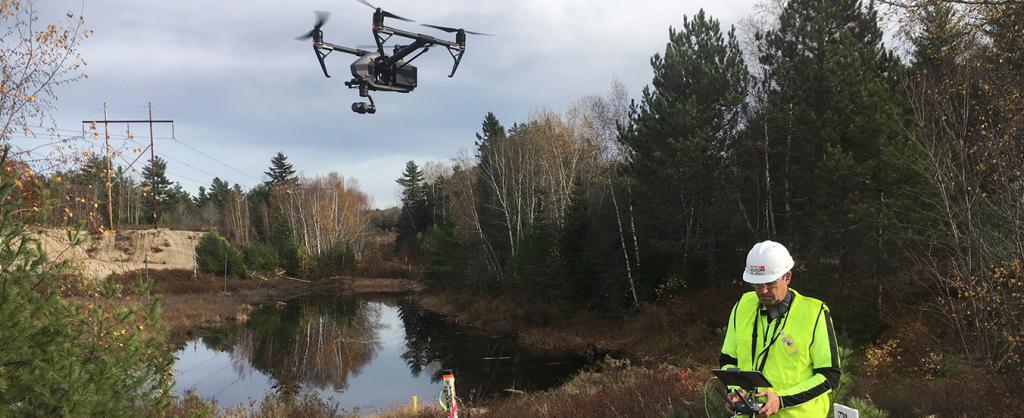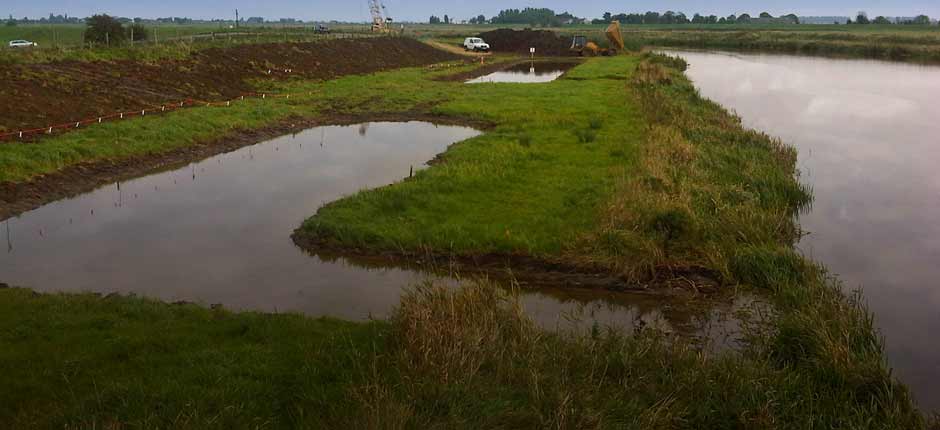The need to assess the impact of new projects on the environment is associated with the widespread occurrence of environmental problems and their impact on the quality of life of the population. Tighter environmental standards and regulations helps to reduce the negative environmental impact of both new and existing business facilities. As a result, GDP growth is achieved with less environmental loss, which is very important in the modern world. EIA allows assessing potential environmental damage from the proposed activity and developing measures to minimize this damage.
What is an EIA?
EIA is an environmental impact assessment - an international term that characterizes a set of actions aimed at determining the nature, intensity of environmental impact and possible environmental consequences of the proposed economic activity. In Russia, the conduct of such events is regulated by the Federal Law “On Environmental Expertise” and is provided for all types of planned activities. Conducting an environmental impact assessment (EIA) requires a specialist to have a wide range of knowledge both in the field of ecology and in related fields (engineering, economics, sociology, etc.). Only in-depth research will satisfy goals.

The EIA materials contribute to the correct assessment of the situation and the adoption of balanced and adequate decisions on how to carry out the proposed activity. They show the nature and level of potential impacts, the magnitude of environmental risks and environmental impacts and provide the basis for developing measures to minimize harmful effects.
Environmental impact assessment and EIA
EIA is one of the forms of environmental impact assessment. Although they still have some differences. The EIA of the proposed activity differs from the state environmental review in some nuances. Ecological expertise operates at the stage of adoption and justification of any decision affecting the environment. It provides an environmental justification for the decision. The main goal of environmental impact assessment is to comply with the basic environmental requirements prescribed by law. EIA, however, involves a study and a comprehensive assessment of the environmental impact of the proposed activity. Thus, environmental impact assessment is more formal, and therefore it is not always enough.
Who are the participants in the EIA?
The main participants in the EIA procedure are the customer and the contractor. Sometimes the public is also involved in its implementation.
- The customer is an individual or legal entity that prepares documentation for the proposed activity, based on existing requirements for this type of activity. Provides the legal right to conduct an EIA to the contractor.
- The Contractor is also an individual or legal entity whose main task is to conduct a procedure to assess the environmental impact of the proposed activity. He is responsible for the accuracy of the results, the completeness of the assessment and the accuracy of the information received. Results must be consistent with accepted standards and guidelines.

When performing the EIA, the contractor conducts research on the impact of the proposed activity on the environment, considers alternative project options. The result of this activity is a preliminary version of the EIA assessment, which is then reviewed by the public.
After holding public hearings and reviewing citizens' comments, the contractor prepares the final version of the EIA. The resulting materials are then used in the overall environmental assessment of the project. The public can also participate in the process by providing additional information and participating in hearings.
What is determined when compiling an EIA?
During the implementation of the EIA project, the following components are determined:
- Parameters of the state of ecology in the area of the proposed facility
- Types, intensity and sources of the existing environmental impact in the study area.
- The volume, nature and intensity of the expected impact in the case of the implementation of the declared project both during its construction and during operation.
- The objectives of the proposed business and alternative project options.

When drafting the proposed activity, the customer should be guided by the following principles:
- Based on the fact that any economic activity may carry a potential environmental risk.
- Mandatory consideration of alternative options to achieve the goals of the proposed activity, including the option of abandoning it (if other options are unacceptable from an environmental point of view).
- The need to allow public participation in the discussion of planned activities and the results of the EIA.
- Proceed only from scientifically sound conclusions and data that should be included in the EIA.
- To proceed from an integrated approach with consideration of the relationship of environmental factors, as well as social and economic consequences.
- Provide all necessary information without distorting the facts to the EIA implementer.
What principles apply when building an EIA
The financial burden of paying for all analysis procedures lies with the customer. When carrying out the EIA procedure, they are usually guided by the following fundamental principles:
- Using the EIA results as a basis for decisions made at the initial stages of designing future activities, as well as the availability of project information for interested groups of people.
- Comprehensive review of interrelated economic, technical, social and environmental proposals for the project.
- Consideration of possible alternatives and design solutions.
- The customer (person planning economic activity) is responsible for the possible consequences of the planned activity (project).

What else is included in the EIA?
In the process of working on the EIA, along the way, other components of the research process are carried out:
- Assess alternative options for the implementation of the economic project.
- The duration and magnitude of the possible impact of future activities is assessed.
- Find out the volume of resource potential of the studied territory and the existing state of the environment.
- The impact of the implemented project on the state of the environment is monitored.
- Develop measures and measures to reduce the impact of the proposed activity on the environment.
- Hold a public hearing. The minutes of these hearings are also included in the body of the EIA results.
- Prepare a report on the results of the EIA.
Implementation steps
The EIA examination is regulated by international norms and rules. This also applies to the sequence of operations. This sequence includes 4 points:
- Screening. At this stage, the degree of need for an EIA and the level of detail of studies are determined.
- Skopping. At this stage, the sources of information are determined, as well as the most important areas in accordance with which the study will be conducted.
- Analysis of project implementation options.During it, from several project options, the most suitable one is selected that gives the least load on the environment.
- Environmental Impact Assessment. At this stage, determine the impact of the project on the environmental situation, biology and social sphere. Including use forecasts.
When assessing the impact, an analysis of various indicators is carried out: specific power (mass of pollutants per 1 sq. M), impact force (influx of pollutants in a unit of time), distribution of pollutant inflow over time (continuous, one-time, discrete), duration of exposure, geography of pollution ( contours of the territory, coverage area, depth).

To regulate the magnitude of the impact of negative factors, they carry out the measures required to reduce, eliminate or compensate for the negative consequences of the implementation of design decisions. Prioritization consists in the selection of more significant components of the environmental impact of the completed project, characterized by a stronger impact. These can be especially dangerous pollutants, a large coverage area, large volumes of pollutants, or impact on protected natural areas.
At the end of the procedure, they begin compiling a report on the work done. This is followed by the adoption or rejection of the project or the adoption of its alternative option, as well as determining the conditions under which it should be implemented. After the EIA, it is envisaged to follow up on compliance with the developed requirements, as well as on the level of the project's impact on the environment and the adoption of measures to reduce the harmful effects.
EIA Violations
According to the law of the Russian Federation “On Environmental Protection”, the customer and the contractor of environmental impact assessment bear a certain responsibility. The customer is obliged to organize an EIA, to provide the results to authorized bodies. It should also fund the EIA, organize public hearings and contact government officials. The Contractor is obliged to comply with the established EIA procedure, and is also responsible for the accuracy of the information contained in it.
During the construction of structures, requirements and standards established by law must be observed, which must be present both at the design stage and during the construction and subsequent operation of the structure. In case of violation of existing requirements, administrative and criminal liability is provided.

In the absence of compliance with the norms and rules of designing, operating facilities, providing false data, fines are provided that are different for officials, individuals and legal entities. In case of violation of the law on environmental impact assessment, which entailed severe environmental consequences, criminal liability is provided.
In case of non-compliance with environmental requirements at the stage of design, construction and operation of facilities, fines are provided in the amount of:
- 1-2 thousand rubles for individuals;
- 2-5 thousand rubles for officials;
- 20-100 thousand rubles for legal entities.
Features of EIA in Ukraine
Ukraine has established its own rules for conducting an EIA. For this, appropriate changes were made to the legislation. There it is interpreted as an assessment of the impact of the proposed activity on the environment, and is abbreviated as ATS. The priority areas for conducting are such aspects as the rational use of natural resources, environmental safety, minimizing the negative impact on the environment during the implementation of the economic project. The result of this procedure is to draw up a conclusion on the environmental impact assessment.
The main difference between conducting an EIA is the rejection of a state environmental review in favor of a conclusion on environmental impact assessment. In the absence of this conclusion, the businessman does not have the right to conduct business at the facility.
Conclusion
Thus, an EIA is an analysis of the environmental impact of a proposed economic activity. This is a form of environmental impact assessment accepted in many countries. The EIA objects are the designed object and its environment. An environmental impact assessment of the proposed activity is now enshrined in Russian law. It is mandatory at the design stage of the facility. The businessman’s lack of an EIA conclusion, especially in the event of emergencies with environmental consequences, can be held criminally liable. Violation or non-compliance with the requirements of the EIA and the state environmental review may result in the payment of fines. The amount of payments is minimum for individuals and maximum for legal entities.

In many cases, after the EIA procedure, it is necessary to carry out environmental monitoring during the construction and operation of the facility. Also, in the conclusion of the EIA, alternative projects with a lower environmental burden on the environment can be proposed. The public can also be involved in conducting an environmental impact assessment. For this, meetings with local residents and public hearings are held. EIA is also carried out as a mandatory procedure in Ukraine, where there is a specific impact assessment.
